Maine holds winter like a secret, and some places whisper the loudest when the snow arrives.
The old fairground at Topsham sits quiet, its long wooden grandstand rising from drifts like a story you almost forgot.
Visit in cold months and you will find more than silence, you will find texture, shadow, and memory.
This list guides you through what remains, how to approach it with care, and where its echoes still reach across the state.
A Grandstand That Survived the Ages
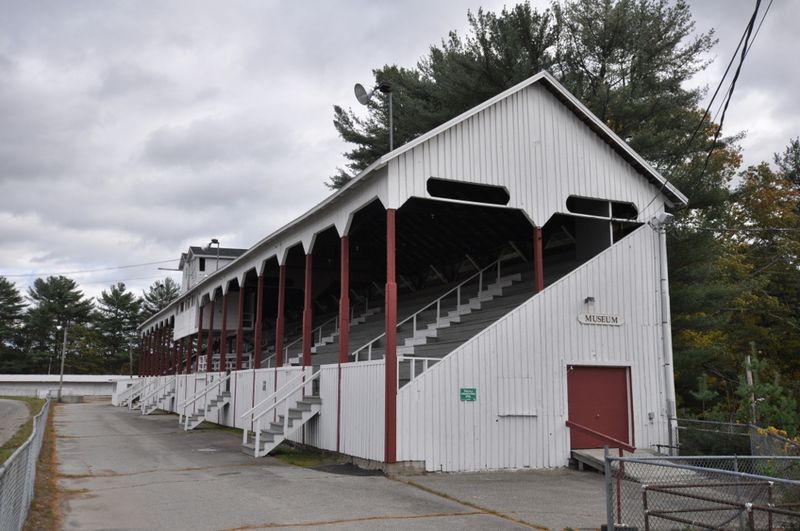
The Topsham Fairgrounds Grandstand stands along Fair Circle in Topsham, Maine, a rare nineteenth century survivor with a long rectangular wood frame and tiered seating. It faces the site of the old oval where harness racing once drew crowds, even as winter pressed at the edges.
When snow settles across the field, the structure looks almost skeletal, every beam outlined in frost. The announcer’s loft sits still, and the steps hold a thin crust of ice.
Local history notes the fair’s agricultural roots, with exhibits and races tied to regional farm life. That context is easy to imagine here, because the bones remain readable.
The place rewards slow looking. You notice joints, braces, and worn paint where hands once gripped railings.
Even without events, the grandstand carries presence. It is a landmark of Maine’s rural past that you can see in winter, when wind clears the air and sound travels lightly.
Fair Days When Snow Was Less Threat
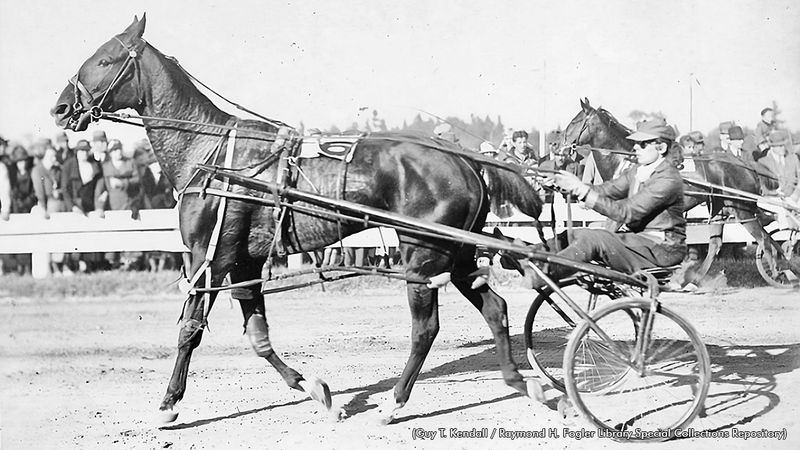
Fairs here once pushed through seasons with confidence, timed to harvests and community calendars. Snow came and went, and the schedule held firm, with racing and exhibitions shaping the year.
Over time some events shifted and other venues grew, but this grandstand remained the anchor of Topsham’s fairgrounds, hosting crowds in summer even as winter leaves it quiet.
Rails and boards remain as evidence, a minimalist archive in open air. Laughter and barker calls have faded, replaced by wind and the muted crunch of ice.
Standing along the oval’s curve, you sense circulation paths where spectators moved. The geometry still guides your eye, even without a crowd.
Winter sharpens edges and heightens contrasts, setting the grandstand apart from its empty field. It is not abandoned memory, it is reserved space, waiting.
Hidden Beneath the White Blanket
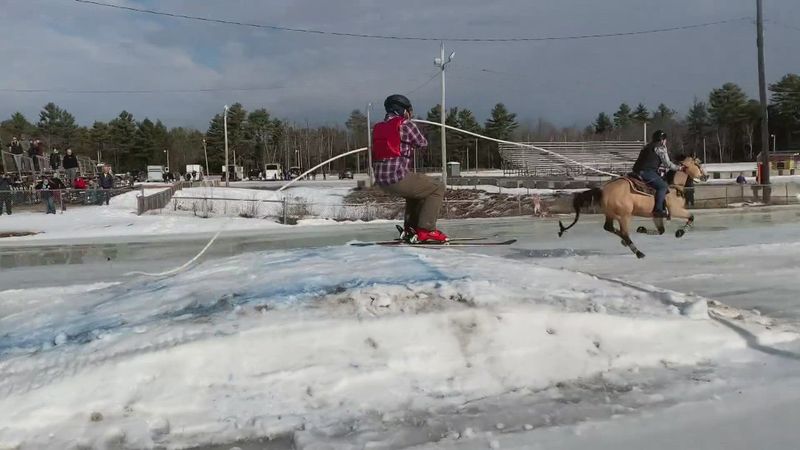
After deeper storms the fairground looks like a relief map, contours of drifts outlining benches and aisles. The grandstand emerges first, a dark ribcage against white.
Look closely at the seating tiers and you will find ice tessellations where slats meet. The announcer’s booth appears like a small cabin keeping watch.
The hush suits the site. Energy once rose from crowds, now it rises from weather, with loose flakes ticking against rails.
Snow simplifies everything. You can read the structure more clearly when color steps back.
Photographers will appreciate soft light and clean lines. Visitors will find a place that asks for care and quiet.
A Structure Beyond Fair Rides
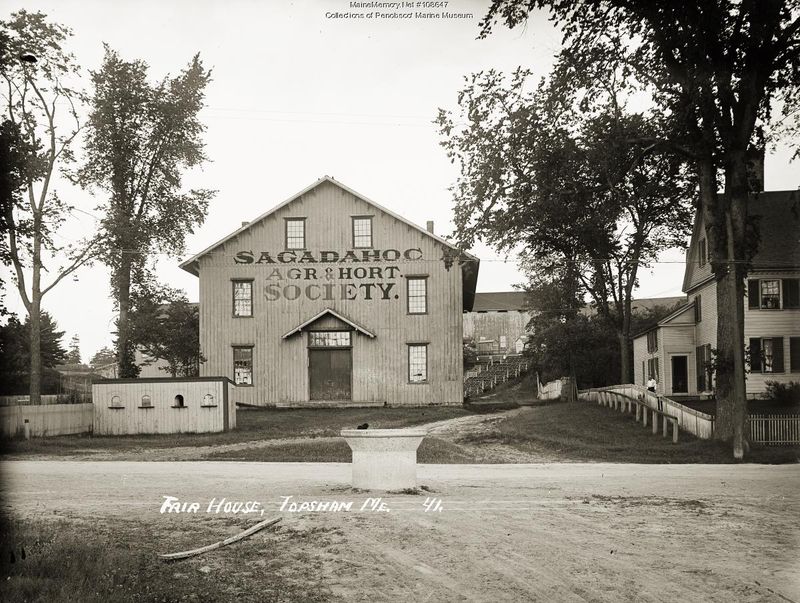
Many fairgrounds vanish when rides are hauled away, but this one kept its spine. The grandstand endures as a single clarified object in a broad field.
Over decades, the oval shifted and activity migrated. The building remained, holding a precise vantage over nothing in particular.
Walking here in winter feels contemplative. The structure reads like a chapter intact, while the rest of the book has scattered.
Architectural details matter when the scene grows spare. The pitch of the roof, the spacing of posts, the rhythm of bays, all add up to presence.
Maine teaches patience in cold months. This landmark rewards that habit with steady lines and a durable silhouette.
What Visitors Rarely See
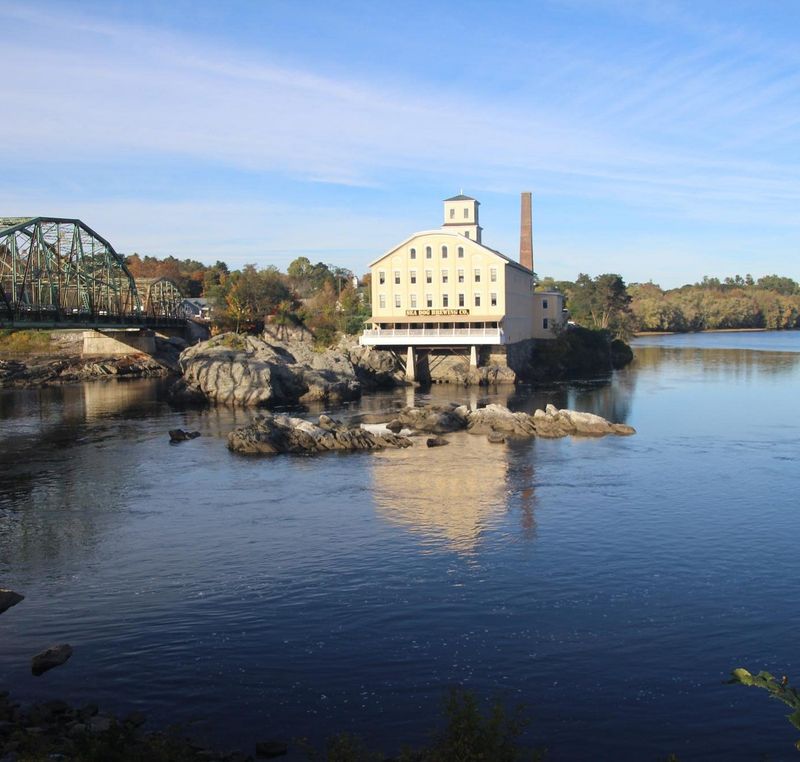
Guidebooks often skip this pocket of Topsham, focusing on coastal towns or busy museums. That omission preserves a rare sense of privacy.
Arrive after a light snowfall and you might see just one set of prints along the fence. The central structure sits apart, lightly dusted and calm.
The surrounding field opens the view. With few reference points, the grandstand becomes a compass for your attention.
Solitude here is not dramatic. It is simple, steady, and generous to those who pause.
In a state known for winter stamina, this quiet corner offers a different reward. You get time, space, and a clear line to the past.
Architectural Whispers of the Past
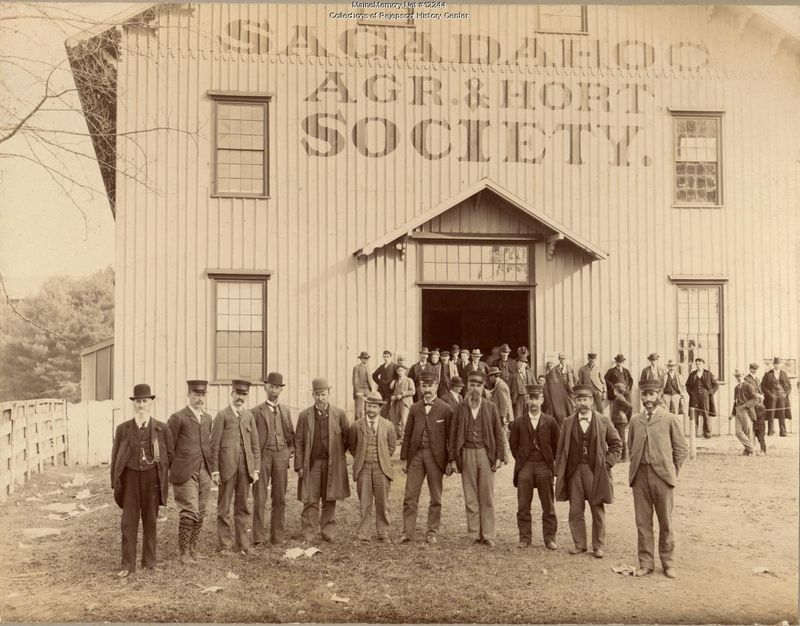
The wooden exterior shows clapboards and trim that echo nineteenth century practice. Inside, tiered benches climb under the roof’s simple truss.
These forms point to an era of agricultural fairs tied to horse racing and community gatherings. The layout celebrates sightlines and collective viewing.
Materials tell their own story. Worn edges mark where thousands once slid along seats.
Joinery and bracing reveal practical ingenuity. Nothing is decorative without purpose, yet the proportions feel graceful.
In Maine, craftsmanship often favors restraint. This grandstand fits that lineage, honest in construction and clear in intent.
The Quiet of Winter Adds to the Mood
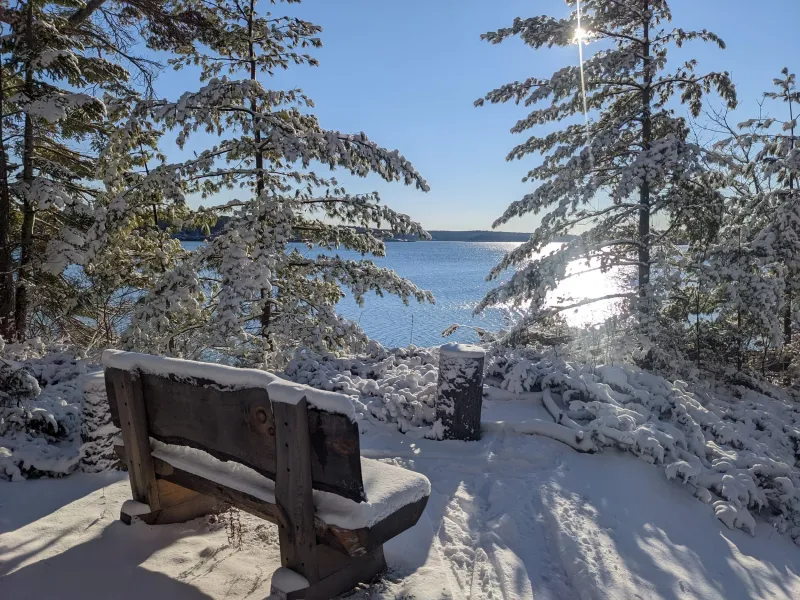
When flakes drift through open bays, sound thins to a hush. You hear the breeze test each plank and the light tap of ice crystals.
The oval beyond rests under a pale sheet. Distance feels larger, as if the field has expanded overnight.
This calm is not absence. It is the presence of weather taking a gentle lead.
Stand in the aisle and let your eyes adjust. Details surface slowly, from nail heads to grain lines.
Maine winters shape memory. Here they also frame the stage, making the grandstand feel suspended between seasons.
How to Visit Respectfully

Navigate to Elm Street in Topsham and look for Fair Circle, which loops around the fairgrounds area. Park legally along public ways and avoid blocking driveways or snow removal routes.
Stay on obvious paths and respect posted signs. Portions of the grounds support events at other times, so treat the site with care.
Ice can linger on shaded steps and packed snow near the stands. Foot traction and warm layers keep the visit comfortable.
Leave the structure as you found it. That includes avoiding climbs, nails, and fragile boards.
Check local weather and town notices before you go. Maine conditions change quickly, and safe access depends on timing.
Why It Matters
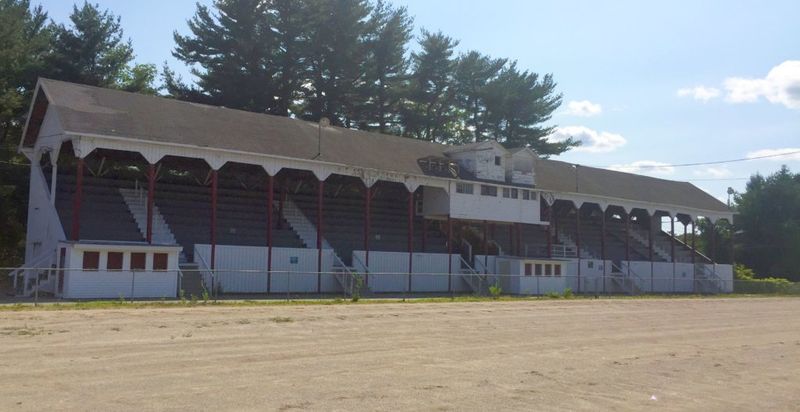
Historic places like this grandstand offer authenticity that modern venues rarely match. The structure holds direct links to rural recreation and community life.
Its survival gives context to fairs that still thrive elsewhere in Maine. You can trace a lineage from wooden benches to contemporary grandstands.
Preservation also supports learning. Students and travelers read tangible clues instead of relying only on images.
The winter setting intensifies meaning. With distractions lowered, the story feels closer.
Seeing it in person encourages stewardship. Quiet respect today helps the grandstand remain part of Maine’s shared memory.
For the Traveller Seeking Solitude
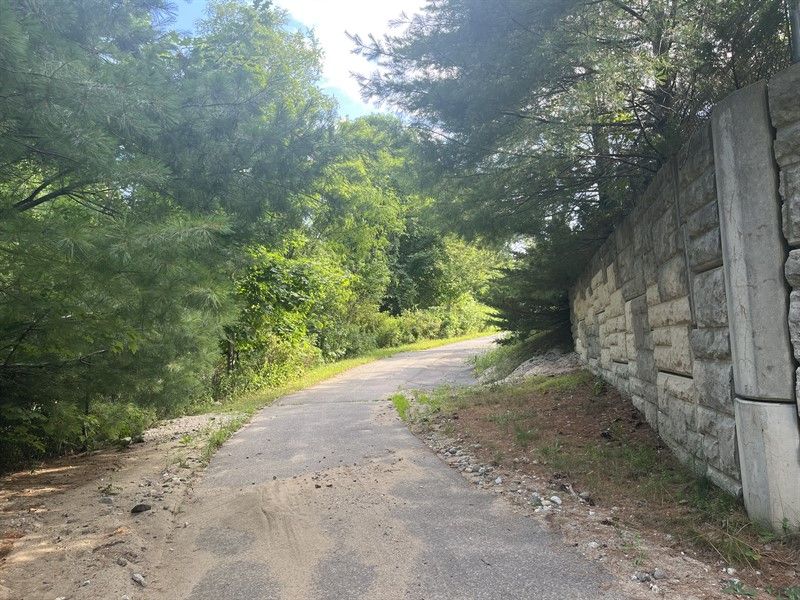
If you look for places where time seems to slow, this field and its grandstand will suit you. The design is simple, the feeling deep.
Winter adds tone and texture that make reflection easy. Each step leaves a brief signature in snow that soon softens.
Stand at the top tier and imagine a full day’s program. Then let the scene return to stillness.
This is not spectacle. It is calm, clarity, and room to breathe.
Maine offers many quiet corners, yet few with a structure so eloquent. The fairground’s voice is soft, and it carries.
Dear Reader: This page may contain affiliate links which may earn a commission if you click through and make a purchase. Our independent journalism is not influenced by any advertiser or commercial initiative unless it is clearly marked as sponsored content. As travel products change, please be sure to reconfirm all details and stay up to date with current events to ensure a safe and successful trip.